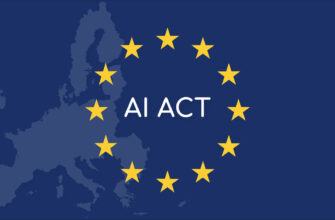Europe’s Push for Digital Sovereignty in the Age of AI has moved from slogan to strategy, and the continent is now testing the shape of power over data, algorithms, and the infrastructure that runs them. Regulators, industry leaders, startups, and research labs all play parts in an increasingly coordinated effort to reduce dependency on foreign platforms while protecting democratic values. This piece traces the motivations, the tools, and the tensions behind that effort, showing what’s already changing and what still needs to be done.
- Why digital sovereignty matters now
- Regulatory toolbox: laws already reshaping the landscape
- Building European alternatives: infrastructure and data spaces
- Strategic pillars for a sovereign AI ecosystem
- Money, chips, and manufacturing: closing the hardware gap
- Standards, certification, and trusted supply chains
- Public procurement as policy instrument
- Research, open source, and the talent pipeline
- Tensions with global ecosystems and trade partners
- Industry response: startups, incumbents, and partnerships
- Practical examples and early wins
- Risks and potential downsides
- Measuring success: what would sovereignty look like?
- What policymakers should focus on next
- Short table: key EU initiatives at a glance
- How businesses can adapt
- Looking ahead: realism and ambition
Why digital sovereignty matters now
Data and compute are the new strategic resources, and control over them shapes economic opportunity and national security. Artificial intelligence thrives on massive datasets and specialized chips, so where those resources sit—and under what rules they are governed—directly affects who can build the most powerful systems. For Europe, the question is not just technological: it’s political and societal.
European policymakers worry that reliance on a small number of foreign cloud providers and chipmakers creates single points of vulnerability. Those dependencies can influence everything from public service delivery to defense procurement and the privacy rights of citizens. Sovereignty, in this context, means having the ability to set rules, inspect systems, and—if needed—operate critical infrastructure without third-party interference.
Regulatory toolbox: laws already reshaping the landscape
Europe has leaned on regulation as its primary instrument of influence, and several laws already reshape digital business models and AI deployment. The General Data Protection Regulation established privacy rules that ripple through AI training and data handling practices. More recently, the Digital Services Act and Digital Markets Act targeted platform power and interoperability.
Alongside those, the EU’s AI Act represents a watershed moment, creating risk-based obligations for developers and deployers of AI systems. While the Act sets obligations on high-risk systems and transparency requirements for certain generative models, implementation will be where the real influence is exercised—through enforcement, standards, and certification schemes.
Building European alternatives: infrastructure and data spaces
Creating alternative infrastructure is a clear priority. Initiatives such as GAIA-X and investments in regional cloud providers aim to offer federated, interoperable options that adhere to European rules. Rather than trying to replicate hyperscalers feature-for-feature, the approach emphasizes sovereignty through standards, data portability, and contractual guarantees.
Data spaces—which federate datasets across industries under shared governance models—are another practical strategy. The European Data Strategy and sectoral efforts like the European Health Data Space promote interoperable datasets that can power AI while keeping control within regulated frameworks. These initiatives are experimental but show how governance and technology can be designed together.
Strategic pillars for a sovereign AI ecosystem
Europe’s push rests on a few intertwined pillars: data governance, infrastructure, compute capability, talent, and procurement. Each pillar tackles a different part of the dependency problem, and progress requires coordination across all of them. Weakness in any area creates pressure on the others.
- Data governance: rules and standards that make datasets usable and lawful across borders.
- Infrastructure: regional cloud, edge compute, and connectivity that reduce reliance on non-European providers.
- Compute capability: access to specialized hardware, including GPUs and accelerators, as well as local manufacturing capacity.
- Talent and research: training and retaining experts so Europe can design and audit advanced models.
- Public procurement: using government buying power to seed European platforms and services.
When these pillars align, policy becomes more than constraint—it’s a lever for innovation that aligns commercial incentives with public interest. The challenge is executing complex projects while remaining open enough to participate in global markets.
Money, chips, and manufacturing: closing the hardware gap
Compute is expensive and concentrated. Semiconductor fabrication and advanced packaging remain areas where Europe has limited capacity, and that scarcity drives dependency. The European Chips Act and targeted funding aim to boost manufacturing resilience and spur domestic production of critical components.
Building fabs and supply chains takes time and capital, but incremental gains matter. Investments in packaging, design, and niche manufacturing can reduce choke points and support European firms that integrate hardware and software for AI. Those firms are more likely to choose local suppliers when the ecosystem supports them financially and contractually.
Standards, certification, and trusted supply chains
Rules without verification are fragile. That’s why Europe is pushing for certification regimes, technical standards, and supply-chain transparency. Certification schemes tied to the AI Act, combined with existing conformity assessments, are intended to make trust measurable and enforceable.
Trusted supply chains go beyond provenance tags; they involve audits, interoperability standards, and tooling for reproducibility. Open-source stacks and reproducible datasets make it easier for auditors to verify claims about models and training data, while standardized APIs and formats support portability across vendors.
Public procurement as policy instrument
European governments are using procurement to steer markets. By favoring suppliers that meet local privacy and security standards, public buyers can create initial demand for sovereign services. This tactic helps younger European providers scale and compete with global incumbents on price and compliance.
Procurement can also set higher standards for transparency, logging, and explainability. When governments insist on auditable AI systems for public services, they establish precedents that private-sector buyers may follow. This ripple effect can shift the economic calculus for building and deploying AI responsibly.
Research, open source, and the talent pipeline
Long-term sovereignty depends on people as much as hardware. Europe funds research through frameworks like Horizon Europe and supports collaborations across universities and industry. These programs aim to cultivate native expertise in machine learning, privacy-enhancing technologies, and trustworthy AI.
Open-source projects offer another lever. European researchers and companies contribute to and release tools that lower barriers to entry for startups and public institutions. A vibrant open-source ecosystem reduces the need to license proprietary stacks from non-European firms and makes auditing and customization easier for local actors.
Tensions with global ecosystems and trade partners
Pursuing sovereignty invites friction. U.S. cloud providers and Chinese firms drive much of today’s AI infrastructure, and tightly restrictive policies could provoke trade disputes or reduce access to the latest innovations. Europe must strike a balance between strategic autonomy and openness to global collaboration.
Diplomacy and standards work in multilateral fora will be essential. By pushing interoperable standards and ethical guardrails, Europe can influence global norms without resorting to protectionism. Still, the transition period will require pragmatic agreements and bilateral arrangements to avoid disrupting services citizens rely on.
Industry response: startups, incumbents, and partnerships
European startups see opportunity in sovereignty policies: compliance requirements create market niches for trustworthy platforms and domain-specific models. Incumbent cloud providers in Europe are also adapting, offering sovereign cloud zones and contractual guarantees to keep public-sector contracts.
Partnerships between public institutions, universities, and private firms are common. These collaborations reduce risk for startups and accelerate adoption of homegrown solutions in sectors like healthcare, energy, and transport. Real-world deployments in these domains tend to generate the credibility required for broader uptake.
Practical examples and early wins
We’ve already seen practical experiments that hint at what a sovereign AI landscape could look like. Federated learning pilots allow hospitals to collaborate on medical AI without sharing raw patient data, and regional cloud offerings provide contractual assurances around data residency and incident response. These projects are small compared with the overall market, but they prove concepts.
From close conversations with engineers working on federated systems, the biggest technical challenge is operational: coordinating updates, ensuring performance parity, and maintaining model quality across heterogeneous nodes. Policy incentives have helped some of these pilots scale from lab demos into production environments.
Risks and potential downsides
Fragmentation is one of the biggest risks. If each country or bloc erects different technical and legal regimes, the result could be higher costs and slower innovation. European firms might struggle to scale globally if compliance regimes diverge. The goal is harmonization rather than Balkanization.
Compliance costs also matter for startups with limited resources. Certification, audits, and legal reviews add friction that favors well-capitalized incumbents. Policymakers must therefore calibrate enforcement, provide incubation support, and streamline certification pathways to avoid stifling competition.
Measuring success: what would sovereignty look like?
Sovereignty can be measured in practical ways: percentage of cloud spend within compliant regional providers, number of certified AI systems deployed in public services, domestic capacity for advanced chip packaging, and the volume of cross-border data flows under European governance frameworks. These indicators offer actionable milestones.
Success also looks like resilience: the ability to operate critical services during geopolitical shocks, to audit and halt harmful models quickly, and to foster a domestic AI industry that competes on quality and trust rather than just price. Those are harder to quantify but central to the political argument for sovereignty.
What policymakers should focus on next
Policymakers need to prioritize interoperable standards, scalable certification processes, targeted funding for labs and fabs, and public procurement that rewards compliance without excluding innovation. Clear timelines and predictable rules will encourage private investment.
Equally important is international engagement: Europe should export its governance approaches through standards bodies and trade agreements while protecting essential supply chains. Combining assertive industrial policy with outward-looking diplomacy is the most pragmatic route forward.
Short table: key EU initiatives at a glance
| Initiative | Primary aim | Relevance to AI |
|---|---|---|
| GDPR | Protect personal data | Shapes lawful data use for model training |
| AI Act | Regulate risky AI systems | Creates compliance and certification frameworks |
| GAIA-X | Federated data infrastructure | Supports sovereign cloud and data spaces |
| European Chips Act | Boost semiconductor capacity | Targets compute sovereignty |
How businesses can adapt
European businesses should map regulatory requirements early, invest in privacy-preserving techniques, and prioritize auditability in their AI pipelines. Adopting open standards and contributing to shared infrastructures can lower long-term costs and reduce vendor lock-in.
For startups, partnerships with public institutions can be a fast path to scale. For larger firms, modular architectures and supply-chain diversification provide insurance against political and technical shocks. In every case, transparency and reproducibility are becoming competitive advantages.
Looking ahead: realism and ambition
Europe’s strategy mixes realism about capacity constraints with ambition about values and market design. It cannot fully decouple from global ecosystems without losing out on innovation, but it can set and enforce rules that favor firms aligned with European norms. That hybrid approach is both pragmatic and normative.
In practice, achieving effective sovereignty will take sustained investment, multilateral cooperation, and patient engineering. The politics will remain messy, but the alternatives—unchecked dependency or isolation—are worse. Europe’s experiment in designing an AI ecosystem that balances control, openness, and competitiveness will be instructive for the rest of the world.
If you want to explore this topic further and read related analysis, visit https://themors.com/ and check our other materials.









